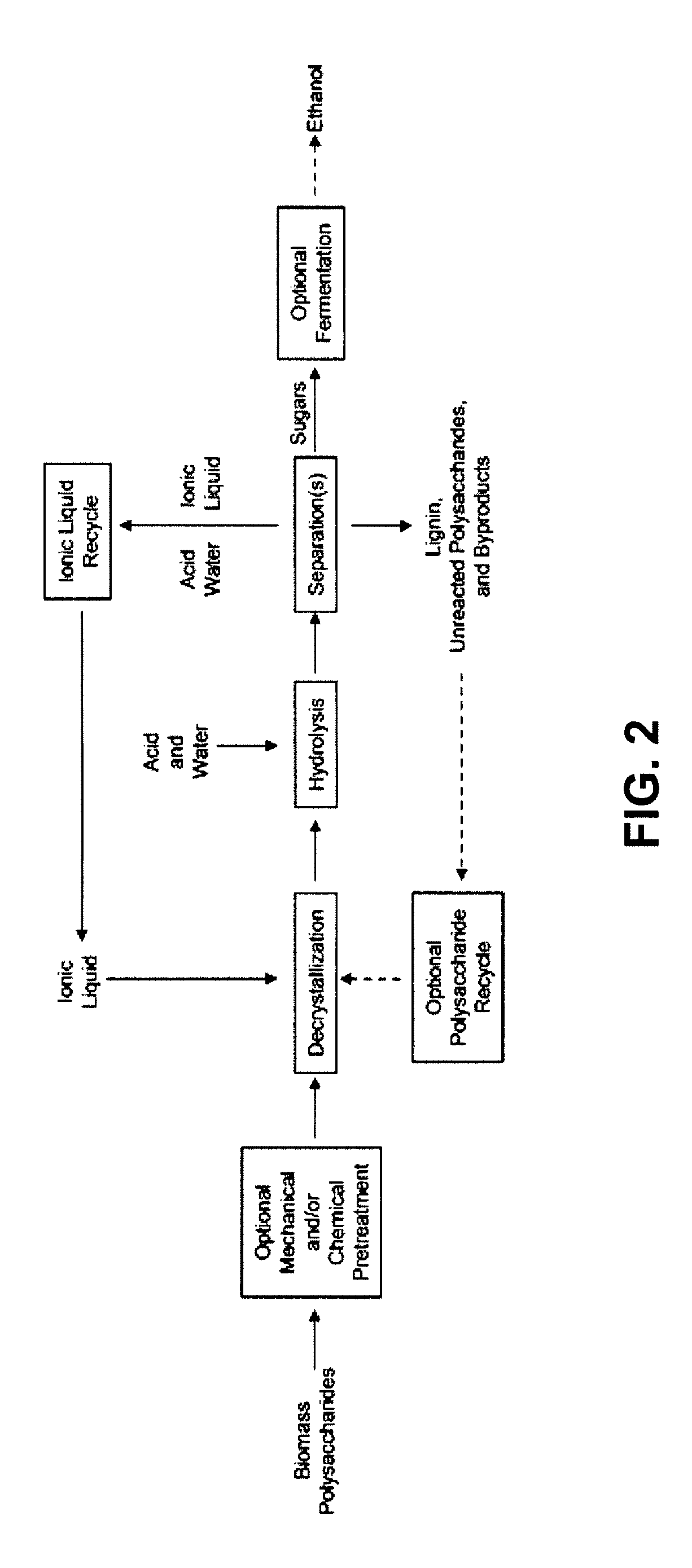Biomass hydrolysis
a biomass and hydrolysis technology, applied in the field of biomass hydrolysis, can solve the problems of low hydrolysis rate, high cost of both pretreatment and enzymes, and physical and chemical disruption of the process of extracting sugar from this heterogeneous feedstock, so as to and facilitate the enhanced yield of glucose
- Summary
- Abstract
- Description
- Claims
- Application Information
AI Technical Summary
Benefits of technology
Problems solved by technology
Method used
Image
Examples
Embodiment Construction
[0053]This invention is at least in part based on the demonstration of an efficient system for polysaccharide hydrolysis as well as means to separate and ferment the resulting sugars. The method of this invention is generally applicable to biomass polysaccharides, i.e., polysaccharides found in biomass, such as cellulose, xylan, mannan, galactan, and arabinan. The method is also applicable to lignocellulosic biomass. The method is also applicable to pre-treated lignocellulosic biomass, particularly such biomass pre-treated with dilute acid.
[0054]By balancing polysaccharide, e.g., cellulose, solubility and reactivity with water, sugars are produced from lignocellulosic biomass in yields that are several times higher than those achieved previously in ionic liquids and approach those of enzymatic hydrolysis. Furthermore, the hydrolyzate products are readily converted into ethanol or other desirable products by microorganisms. The invention provides an improved method for biomass hydrol...
PUM
| Property | Measurement | Unit |
|---|---|---|
| temperature | aaaaa | aaaaa |
| weight % | aaaaa | aaaaa |
| pKa | aaaaa | aaaaa |
Abstract
Description
Claims
Application Information
 Login to View More
Login to View More - R&D
- Intellectual Property
- Life Sciences
- Materials
- Tech Scout
- Unparalleled Data Quality
- Higher Quality Content
- 60% Fewer Hallucinations
Browse by: Latest US Patents, China's latest patents, Technical Efficacy Thesaurus, Application Domain, Technology Topic, Popular Technical Reports.
© 2025 PatSnap. All rights reserved.Legal|Privacy policy|Modern Slavery Act Transparency Statement|Sitemap|About US| Contact US: help@patsnap.com



